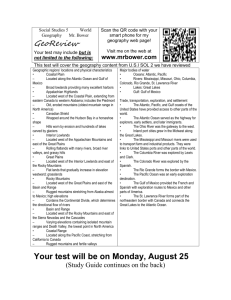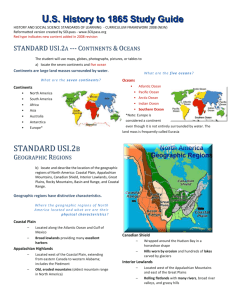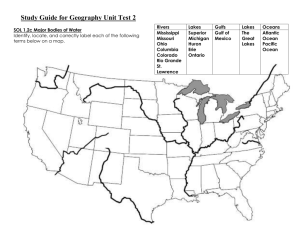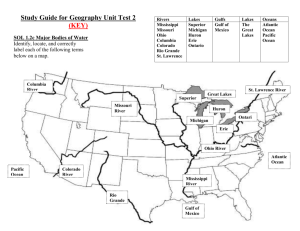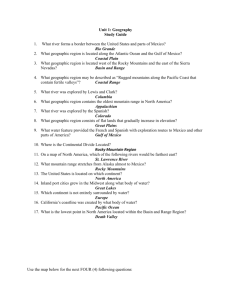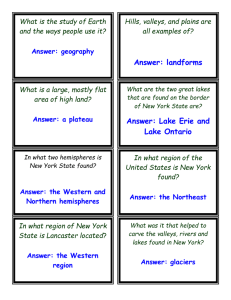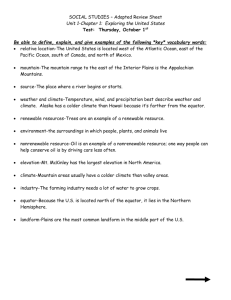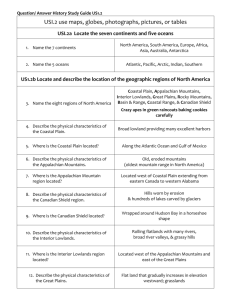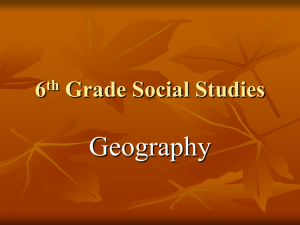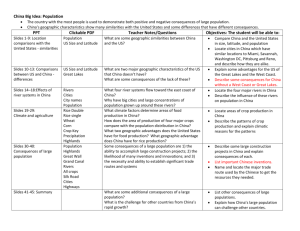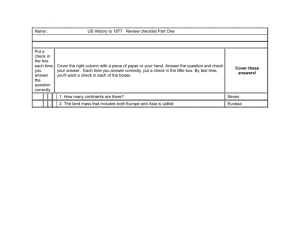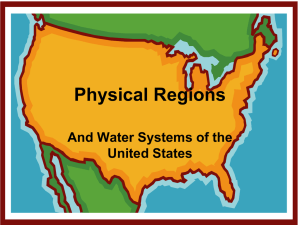Unit 1 Geography
advertisement
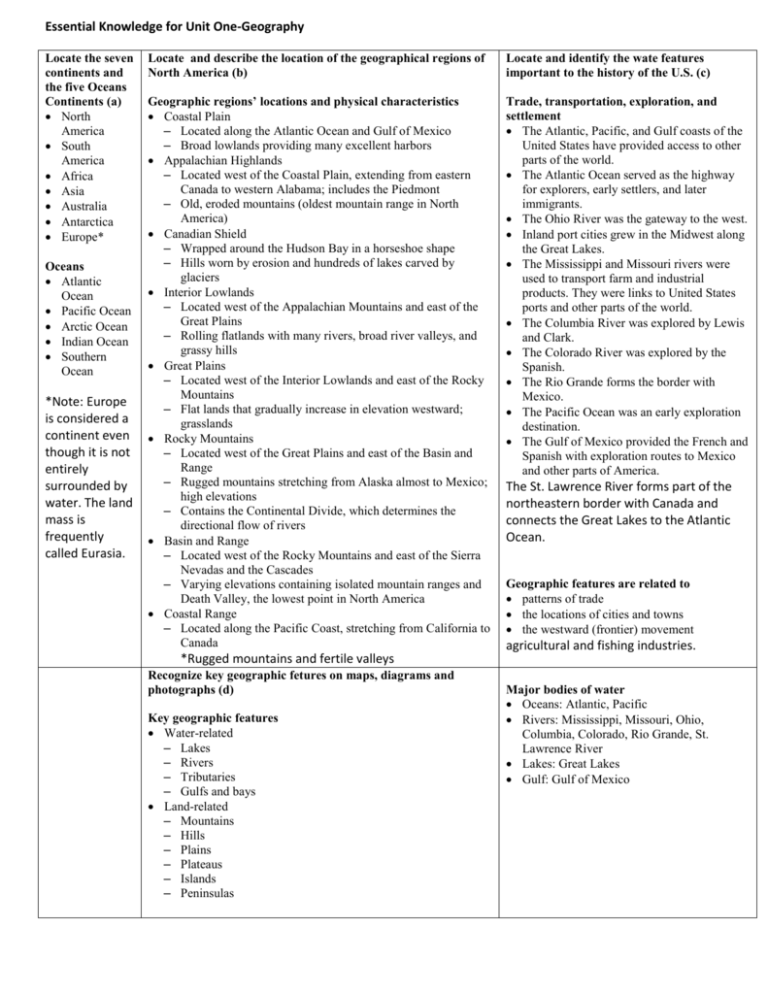
Essential Knowledge for Unit One-Geography Locate the seven continents and the five Oceans Continents (a) North America South America Africa Asia Australia Antarctica Europe* Oceans Atlantic Ocean Pacific Ocean Arctic Ocean Indian Ocean Southern Ocean *Note: Europe is considered a continent even though it is not entirely surrounded by water. The land mass is frequently called Eurasia. Locate and describe the location of the geographical regions of North America (b) Locate and identify the wate features important to the history of the U.S. (c) Geographic regions’ locations and physical characteristics Coastal Plain – Located along the Atlantic Ocean and Gulf of Mexico – Broad lowlands providing many excellent harbors Appalachian Highlands – Located west of the Coastal Plain, extending from eastern Canada to western Alabama; includes the Piedmont – Old, eroded mountains (oldest mountain range in North America) Canadian Shield – Wrapped around the Hudson Bay in a horseshoe shape – Hills worn by erosion and hundreds of lakes carved by glaciers Interior Lowlands – Located west of the Appalachian Mountains and east of the Great Plains – Rolling flatlands with many rivers, broad river valleys, and grassy hills Great Plains – Located west of the Interior Lowlands and east of the Rocky Mountains – Flat lands that gradually increase in elevation westward; grasslands Rocky Mountains – Located west of the Great Plains and east of the Basin and Range – Rugged mountains stretching from Alaska almost to Mexico; high elevations – Contains the Continental Divide, which determines the directional flow of rivers Basin and Range – Located west of the Rocky Mountains and east of the Sierra Nevadas and the Cascades – Varying elevations containing isolated mountain ranges and Death Valley, the lowest point in North America Coastal Range – Located along the Pacific Coast, stretching from California to Canada Trade, transportation, exploration, and settlement The Atlantic, Pacific, and Gulf coasts of the United States have provided access to other parts of the world. The Atlantic Ocean served as the highway for explorers, early settlers, and later immigrants. The Ohio River was the gateway to the west. Inland port cities grew in the Midwest along the Great Lakes. The Mississippi and Missouri rivers were used to transport farm and industrial products. They were links to United States ports and other parts of the world. The Columbia River was explored by Lewis and Clark. The Colorado River was explored by the Spanish. The Rio Grande forms the border with Mexico. The Pacific Ocean was an early exploration destination. The Gulf of Mexico provided the French and Spanish with exploration routes to Mexico and other parts of America. *Rugged mountains and fertile valleys Recognize key geographic fetures on maps, diagrams and photographs (d) Key geographic features Water-related – Lakes – Rivers – Tributaries – Gulfs and bays Land-related – Mountains – Hills – Plains – Plateaus – Islands – Peninsulas The St. Lawrence River forms part of the northeastern border with Canada and connects the Great Lakes to the Atlantic Ocean. Geographic features are related to patterns of trade the locations of cities and towns the westward (frontier) movement agricultural and fishing industries. Major bodies of water Oceans: Atlantic, Pacific Rivers: Mississippi, Missouri, Ohio, Columbia, Colorado, Rio Grande, St. Lawrence River Lakes: Great Lakes Gulf: Gulf of Mexico Essential Questions What are the seven continents? What are the five oceans? Where are the geographic regions of North America located? What are some physical characteristics of the geographic regions of North America? What are the major bodies of water in the United States? What are some ways bodies of water in the United States have supported interaction among regions and created links to other areas? What are some important categories of geographic features? What do these important geographic features look like when they appear on maps, globes, and diagrams? What do these important geographic features look like when they appear in pictures and photographs? Why are geographic features important in United States history?
